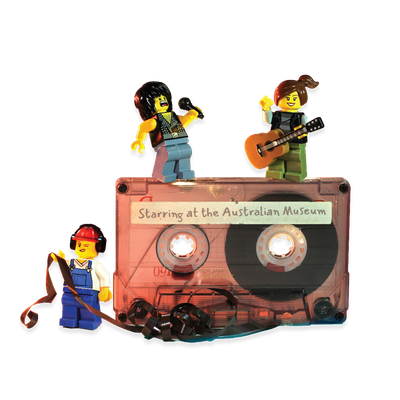Your search returned 2817 results
By Page Type
By Tag
- fish (966)
- blog (696)
- fishes of sydney harbour (401)
- First Nations (299)
- Blog (236)
- AMRI (169)
- archives (164)
- Eureka Prizes (146)
- Aboriginal and Torres Strait Islander (135)
- insect (126)
- Ichthyology (124)
- geoscience (109)
- minerals (102)
- climate change (99)
- podcast (94)
- Fish (91)
- Anthropology (89)
- International collections (80)
- Minerals Gallery (78)
- wildlife of sydney (78)
- Labridae (77)
- frog (74)
- gemstone (70)
- photography (66)
- history (64)
- Mollusca (60)
- gem (59)
- staff (59)
- Birds (56)
- Gems (56)
- Indonesia (56)
- education (56)
- shark (55)
- AMplify (54)
- people (53)
- earth sciences (50)
- exhibition (50)
- past exhibitions (50)
- Gobiidae (48)
- sustainability (46)
- Pomacentridae (45)
- Serranidae (44)
- lifelong learning (42)
- science (42)
- Earth and Environmental Science (41)
- Syngnathidae (41)
- Ancient Egypt (40)
- Bali (40)
- bird (40)
- dangerous australians (40)
-
The universe
https://australian.museum/learn/minerals/shaping-earth/the-universe/The universe can be defined as the whole of existing things from the scale of sub-micron to outer space.
-
Looking inside the Earth
https://australian.museum/learn/minerals/shaping-earth/looking-inside-the-earth/The internal structure of the Earth consists of three main parts, the crust, mantle and core. The division between the crust and the mantle is called the Moho.
-
Cerussite
https://australian.museum/learn/minerals/mineral-factsheets/cerussite/This statuesque group of cerussite crystals has been an icon of our mineral collection for over 90 years.
-
Malachite
https://australian.museum/learn/minerals/mineral-factsheets/malachite/These lustrous sheaths of emerald-green, radiating, silky malachite (copper hydroxy-carbonate) needles resemble plush velvet and make a very attractive specimen.
-
Black Opal
https://australian.museum/learn/minerals/mineral-factsheets/black-opal/Australian black opal is the most prized and most valuable type of precious opal.
-
Rhodonite
https://australian.museum/learn/minerals/mineral-factsheets/rhodonite/This outstanding blood-red rhodonite (manganese silicate) crystal group with sharp, parallel bladed crystals is the finest rhodonite crystal group of its kind in the world.
-
Stolzite
https://australian.museum/learn/minerals/mineral-factsheets/stolzite/Stolzite is a rare lead tungstate mineral found in several locations around the world, but Broken Hill produced exceptionally large, nicely coloured and well-formed crystals.
-
Chrysocolla replacing Azurite
https://australian.museum/learn/minerals/mineral-factsheets/chrysocolla-replacing-azurite/These flower-like replacements (or pseudomorphs) of azurite (copper hydroxy-carbonate) by chrysocolla (copper silicate with water) were a unique feature of the Dorothy Mine, and are much prized by collectors.
-
Smithsonite on Cerussite
https://australian.museum/learn/minerals/mineral-factsheets/smithsonite-on-cerussite/Smithsonite is usually white or cream, yellow or blue, but occasionally a trace of copper can give it a pleasing apple green colour, like this one.
-
Malachite in Gossan
https://australian.museum/learn/minerals/mineral-factsheets/malachite-in-gossan/This is a very large and impressive malachite (copper hydroxy-carbonate) with rounded groups of green, radiating fibrous crystals of velvety texture, that was extracted from an open cavity in the mine.
-
Discover more
2025 Australian Geographic Nature Photographer of the Year
Special exhibition
Free entry
Now open -
Discover more
Unfinished Business
Special exhibition
Free entry
Now open -
Discover more
Wansolmoana
Permanent exhibition
Free entry
Open daily -
Find out more
Burra
Permanent kids learning space
Free entry
10am - 4.30pm![]()
-
Discover more
Minerals
Permanent exhibition
Free entry
Open daily![]()




